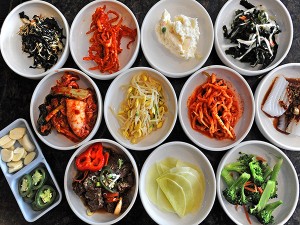 Dear anyone who is planning to eat Korean food with a traditionally Korean family/ friends,
Dear anyone who is planning to eat Korean food with a traditionally Korean family/ friends,
Food is an integral part of culture and sharing food is a natural, bonding experience. But cultural etiquette matters. The following is a concise summary of the do’s and don’ts of Korean table manners to optimize your experience at the table.
I wrote this as a guide – mainly for a second or third generation Korean Americans who might be eating with extended family who are traditionally first generation Koreans, but this can also be applied to the general context of any traditional Korean meal. The suggestions appear in the order of which they might occur.
Before eating, ask if you may help with anything in the kitchen. Even the small act of service such as setting up the spoons and chopsticks is a polite and helpful gesture to the one preparing the meal. Although this isn’t a must-do, it starts off your evening on a pleasant note.
Once seated at the table but before eating, say, “Jal muk ge sseum ni da” (잘 먹겠습니다). When directly translated, this means “I will eat well” but means more of an expression of gratitude and appreciation to the one who prepared the meal.
Wait for the oldest person to begin eating before getting started on your own. Respect for the elders is a deeply rooted value in Korean culture and waiting for them to begin eating first honors this ethic.
Don’t play with your food or shake your food (especially the side dishes). My mom would sternly tell me to stop when she caught me doing this, explaining that I was “shaking all the good fortune away.”
At the end of the meal, acknowledge and thank your host by saying “Jal muk ut sseum ni da” (잘 먹었습니다).
Lastly, gold stars for you if you know how to properly use a pair of chopsticks!
Additionally, for someone who is only accustomed to American table manners, you may be surprised to find that chewing with your mouth open is not uncommon at the Korean dining table. Every culture has its own set of rules. Be respectful and understand that this is one of many differences that might require some time for you to get used to.
Overall, table manners tell us something much deeper about the culture. Let’s connect these rules to the bigger picture of things: Notice the reoccurring themes of respect and expression of gratitude behind these etiquette, which stem from bigger values in Korean culture.
By Hajin Lily Yi




